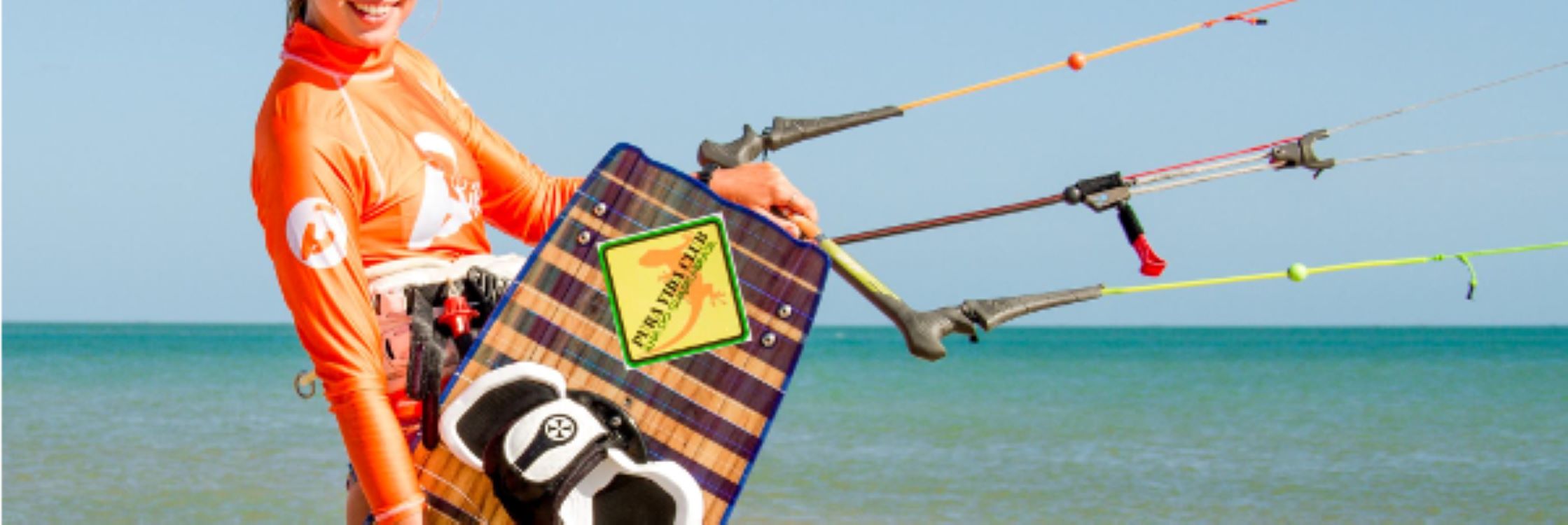Jumping on the beach

Are you learning some new tricks, enjoying the 3D aspect of kiteboarding? Your confidence starts to rise and you practice your jumps on the beach? IKO Reminds you that this is forbidden as you may easily injure yourself with an unfortunate landing… When you have a huge play ground (the ocean) available close to you, why taking unnecessary risks that could get you out of the water for months? Enjoy the freestyle in the water, so you can jump higher with minimal risks! You can also take freeride/freestyle/wave/hydrofoil lessons together with and IKO Coach in an Evolution Clinic to boost your progression.
What is a kite made of?

The main keys for kite producers are twofold: light and durable. Different materials have been tried out over the years, but polyester remains the most commonly used fabrics as it is resistant to all the harsh treatments your kite will be exposed. Every time you go kiting, it will be parked in the sand;where the sun and the wind damage it. then it will hit the water while performing a new trick. The leading edge is usually made of Dacron which is actually a trademark of polyester. Years ago, most types of polyester used would tear easily until a lighter and high-tenacity polyester known as T9600 was invented. Most kite producers now use it. Only a few companies use a different material called Dacron weave 4-directional laminate. It is as light and durable as T9600 but less popular among kite makers as it is harder to weave. No matter the material, what counts is to take care of your kite. Don’t leave it in the sun for too long, don’t brush the sand off the leading edge while your kite is still wet, and dry it completely before you put it away. These simple tips will extend the ‘lifespan’ of your kite!
Check your lines setting

Check your line settings regularly. Lines can easily become loose, damaged, or tangled (knots). First, attach all extremities of the lines to a fixed point such as a hook. Slightly pull the bar to create a bit of tension. Check if there is a damaged line. If yes, change it otherwise, it will get worse, and that is dangerous. Second, check the symmetry of the back lines. If a line is shorter or longer, you can fix the problem by adjusting the knots under the floater. Third, look for knots. If there is a knot, remove it or if not possible, change the whole line as it will eventually damage the line. Finally, check the center line which tend to rip quickly from the bar constantly rubbing them. Wash your bar and lines after each use to keep them in good conditions.
Make foot-strap adjustment comfortable

It is important to adjust your foot-straps well before you venture in the water! One of your feet could easily slip out of a loose strap and therefore, you could have a serious accident and break a leg. The screws of the straps have to be tight as it is very dangerous if a screw falls off. Over time, the fabrics of the foot-straps deteriorates and slowly rips. It is time to replace them with new ones! Wash the salt and sand off your board at the end of your kiting day paying special attention to the inside and outside of the foot-straps and ideally, dry your board in the shade. As your foot-straps have moved during your last session, remember to check them again before you go back in the water!
